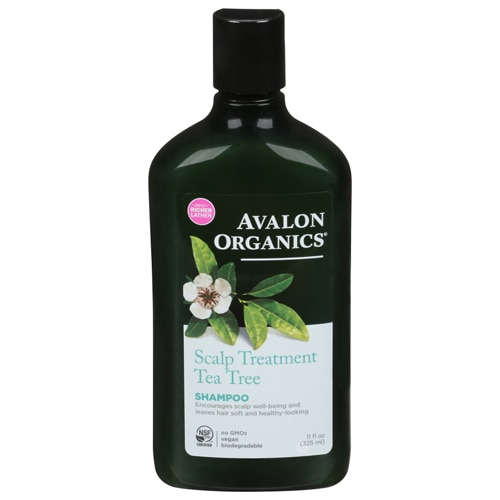[vc_row][vc_column][vc_column_text]By now you have probably heard of
gut microbiome, the teeming bacteria that congregate inside our intestines and play a huge role in determining the robustness of our health. The National Institute of Environmental Health Sciences (NIEHS) describes microbiomes as the collection of all microbes, such as bacteria, fungi, viruses, and their genes, that naturally live on our bodies and inside us. But did you know your scalp also has its own microbiome?

What is the scalp microbiome?
The scalp’s microbiome has a big impact on the health of our hair. Think of the scalp as like the soil of a farm. Poor soil will directly affect the well-being of the plants growing in it. For that matter, anything that would cause scalp inflammation can be harmful to the existence and well-being of hair.
According to the American Academy of Dermatology Association, scalps contain about 100,000 follicles each. A hair follicle goes deep into the scalp and has its own microbiome that contributes to the scalp’s collective microbiome. Like your skin microbiome, your scalp's microbiome is its first line of defense against the outside world. A healthy scalp is critical to your overall hair health.
Keeping the microbiome balanced basically means fighting off the negative microbes that harm the scalp while preserving and nourishing the positive, beneficial microbes.
If you do have an imbalanced scalp biome, daily hair care rituals gone awry are often the cause. Product buildup, dead-cells, dirt accumulation, stripping the scalp from over-washing hair, and not properly drying the hair after you shower (the damp environment is a perfect breeding ground for bacteria), are all common causes for scalp bedlam.
Prolonged imbalance can compromise your scalp’s immune response, and lead to dandruff, seborrheic dermatitis (a condition that causes dandruff and scaly patches), and atopic dermatitis (eczema). Besides dandruff, the most frequent indicators of an unhealthy scalp include itching, burning, bumps on scalp, extreme oiliness and hair loss.
6 Tips for Caring for Your Scalp Microbiome
Choose your products carefully
As far as your routine goes, choosing a
shampoo with ingredients such as tea tree oil or neem, can restore scaIp health. Both ingredients reduce inflammation, negative microbial load, and increase scalp hydration. Even if you don’t have dandruff, choosing natural products that do not have harsh chemicals is a smart strategy. Harsh chemicals wind up killing all the good bacteria and fungus. Hair treatments such as dye and bleach may also damage the hair shaft and scalp skin.
Shampoo tenderly
Rather than scrubbing your scalp when shampooing your hair, massage it. This will increase circulation and avoid causing abrasions on the scalp. The ideal time to massage your scalp is when you are already in the shower. After your hair is wet, massage your scalp for one minute, working in the shampoo, and pressing towards your crown with circular movements.
Incorporate a scalp scrub
Scalp exfoliation is great for those who suffer from scalp disorders such as dandruff and other inflamed skin conditions. It can also increase hair fullness.
Thinning hair is caused by clogged pores—natural oils from your scalp accumulate in the hair pore. When hair pores get blocked, it can stop hair from growing.
A
2018 study suggests a link between scalp health and hair growth and quality. According to the study, scalp exfoliation can increase hair fullness and reduce hair shedding while controlling scalp Malassezia levels — a type of yeast that can disturb hair follicle renewal. Exfoliating removes the oils and unclogs the pore so hair can grow more easily. Just don’t over-scrub. While you can massage your scalp every day, using an exfoliation product should only be used once or twice a week.
Wash less often
Shampooing your hair too frequently strips away the natural oils. In turn, your scalp may produce more oils in order to keep it hydrated, resulting in oily-looking hair. If you already struggle with a dry or itchy scalp, try increasing time between washes to balance out the oil production. As a general rule of thumb, two to three times a week is plenty. For those with curly hair, can go between five to seven days between washes.
Farm to scalp
Aim to eat a variety of produce to get the benefits of the wide array of
antioxidants. Many fruits and vegetables, for example, are rich in vitamin C, which aids collagen production and iron absorption, two factors that may promote hair growth.
Include probiotics
Taking a
probiotic supplement might do more than just help with gut health. Experts reference the
gut-skin axis to explain how probiotic supplements promote good bacteria and nurture the skin/scalp microbiome.[/vc_column_text][/vc_column][/vc_row][vc_row][vc_column][vc_text_separator title="Scalp Solutions" border_width="2"][vc_row_inner equal_height="yes" content_placement="middle" gap="35"][vc_column_inner width="1/3"][vc_single_image image="161328" img_size="full" alignment="center" onclick="custom_link" img_link_target="_blank" css=".vc_custom_1658604727786{padding-right: 7% !important;padding-left: 7% !important;}" link="https://www.vitacost.com/garden-of-life-raw-probiotics-women#"][/vc_column_inner][vc_column_inner width="1/3"][vc_single_image image="161329" img_size="full" alignment="center" onclick="custom_link" img_link_target="_blank" css=".vc_custom_1658604748903{padding-right: 7% !important;padding-left: 7% !important;}" link="https://www.vitacost.com/pacifica-scalp-love-rosemary-mint-serum"][/vc_column_inner][vc_column_inner width="1/3"][vc_single_image image="161327" img_size="full" alignment="center" onclick="custom_link" img_link_target="_blank" css=".vc_custom_1658604773403{padding-right: 7% !important;padding-left: 7% !important;}" link="https://www.vitacost.com/derma-e-scalp-relief-treatment"][/vc_column_inner][/vc_row_inner][/vc_column][/vc_row]




